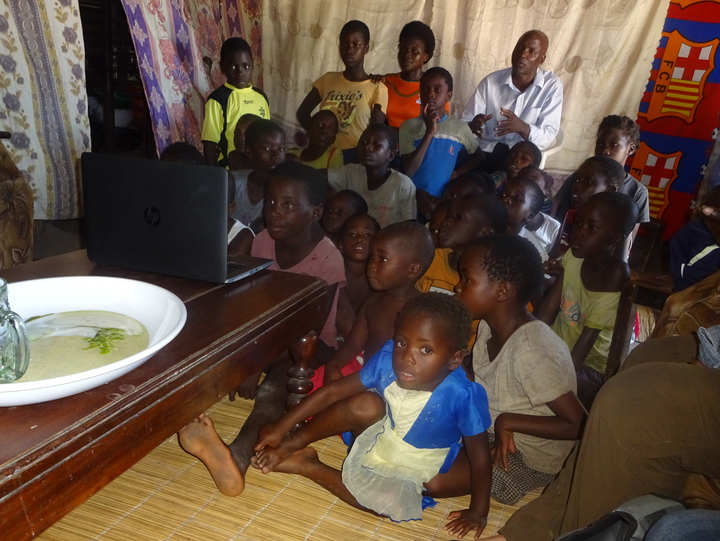Diversifying diets in Barotse - local communities see the landscape with new eyes

Bioversity International researcher Natalia Estrada-Carmona blogs about a recent trip to Barotse, Zambia where her research group screened films as part of participatory action research and received heartwarming feedback from the communities.
Blog post by Natalia Estrada-Carmona, Post-Doctoral Fellow, Agricultural biodiversity and Ecosystem Services
Nutritious diverse foods are critical in accomplishing food security. However, the incorporation of those foods into local diets and agricultural practices takes time and is a learning process.
In Barotse, Zambia, nutrition groups and food fairs have been instrumental in linking crop and diet diversification for healthy diets, people and the environment. Last year, as part of this participatory research process, Bioversity International produced two videos Putting diversity on the plate and Cooking together in Zambia.
In March 2016, we went back to five villages in Barotse and screened the videos for everyone to see. Afterwards, we conducted a follow-up discussion on the accuracy of the messages and statements made in the video, their perceptions, importance of the themes presented in the films in their daily life and ideas for next steps on crop and diet diversification.
While watching the videos, people opened their eyes wide and listened to every word very carefully. They looked at the video as if it was filmed in another place. At minute 8:49 of Putting diversity on the plate everyone laughed; people mentioned that they “loved the way the kid was eating, he was enjoying the meal because it is tasty and nutritious and it is evident that this kid is healthy”. Similarly, a farmer from Nalitoya village commented after the film ended: “I did not know that the floodplain looked so beautiful on the screen”. Many found it encouraging seeing other communities on the floodplain creating similar groups; they felt a sense of solidarity.
Communities refer to the nutrition groups as a safe space where women and men can learn and work on rescuing traditional knowledge. For example, a farmer in Lealui mentioned “the nutrition groups taught us how to work and learn together. The utility of this group is that it created an identity for us.”
How does a nutrition group work exactly? Group members meet once per month to learn about the nutrients of different foods, discover healthy cooking methods and experiment with different recipes. During these sessions, people highlighted they are already enriching their dishes by adding powdered food like pumpkin seeds, consuming local beans for the protein in their daily diets, avoiding to overcook and destroy nutrients, adding more vegetables to meals, particularly those available in the given month by using seasonal calendars, balancing their dishes better and properly washing vegetables. Similarly, taboos that limited the consumption of nutritious food are changing. People believed that “children should not eat eggs, but now they know their importance for kids’ health”.
More interestingly, farmers who already incorporated more crops in their gardens encouraged other farmers to consider planting foods that are good for their health. “We should improve our gardens to provide nutritional food”. “In the past we relied so much on fish but now we believe in diversified diets for our health and benefit. I planted white and yellow squash in my garden, pumpkin, watermelon, maize and more”, one of the 'converted' farmers added. Communities start consuming more fruits such as oranges, papayas, bananas, and guavas, some relatively new foods such as carrots, legumes and bringing back the traditional ones like water lilies' tubers.
Another 'diversity champion' underlined that diversified crops and diets mean happiness and healthiness. However, there is still a lot to learn. This process involves a locally-driven hands-on experience from the field to the dish.
Learn more about Bioversity International's work on diversifying diets
This work on nutrition-sensitive landscapes is part of Bioversity International's 'Healthy diets from sustainable food systems' research initiative carried out in partnership with the Farming Systems Ecology (FSE) group from Wageningen University and the Earth Institute at Columbia University, to characterize the Barotse landscape and its current farming systems. It is part of the CGIAR Research Program on Aquatic Agricultural Systems (AAS) and the CGIAR Research Program on Agriculture for Nutrition and Health (A4NH).
Photo: Men, women and children watch a film about research done in their village in Barotse, Zambia. Credit: Bioversity International/N. Estrada-Carmona
